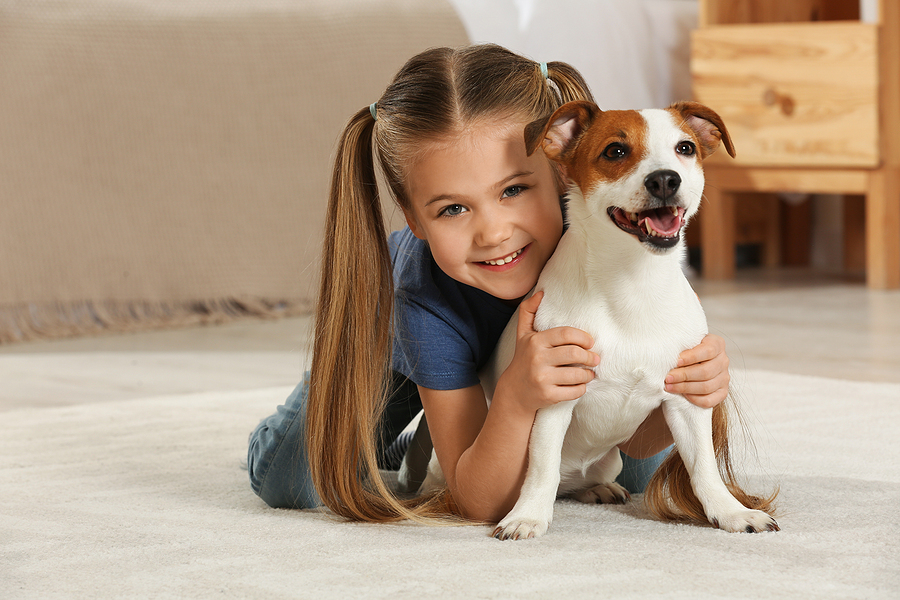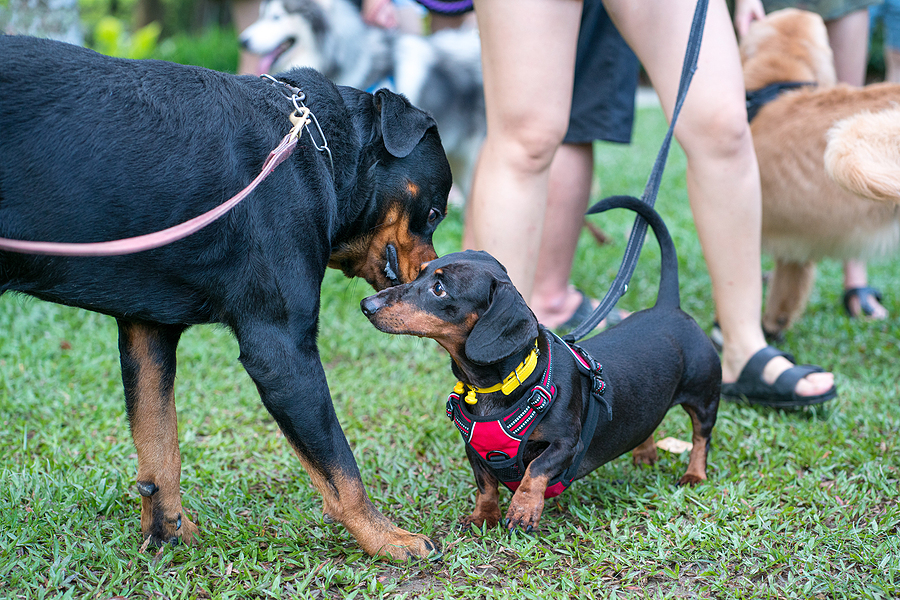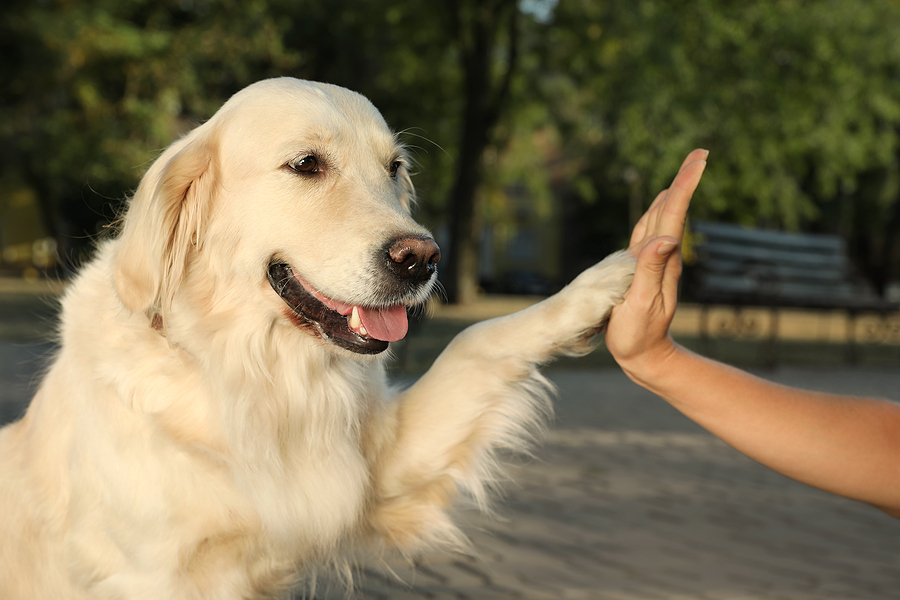There’s little that can compare to the sheer joy and thrill of welcoming a new dog into your home. Those wagging tails and enthusiastic licks promise countless memories and a fulfilling relationship for both of you. Yet, amidst all the excitement, it’s paramount to remember that introductions, when done right, lay the foundation for a harmonious and lasting relationship with your new pet. Proper introductions not only ease the dog’s transition but also ensure the comfort and safety of all members of your family. Here are some tips on how to introduce dogs to all your family members.
How to Introduce Dogs to Children
Children and dogs can form the most heartwarming of bonds. Here are some tips to help ensure this relationship starts on the right foot.
Educate Your Children: Before you even bring the new dog home, have a sit-down with your children. Discuss the dog’s potential fears and sensitivities, emphasizing the importance of a calm and gentle approach. Ensure they understand that dogs, especially new ones, can be skittish with abrupt movements or loud noises. Rules like not pulling on the dog’s tail or ears and approaching the dog calmly can set the stage for positive interactions
The First Meeting: When it’s time for the initial introduction, choose a quiet and neutral space. Allow your child to sit down, making them seem less imposing, and let the dog approach at its own pace. It’s important not to force the interaction. This first meeting should be brief but positive.

Supervised Interactions: Children, in their excitement, can sometimes be unintentionally rough. Every interaction between your new dog and your kids should be supervised, especially in the beginning. By overseeing these moments, you can gently correct any inappropriate behaviors from either the dog or the child, ensuring both their safety.
Teach Respect: Make sure your children understand that while the new dog is a family member, it’s also important to give them their own space, especially during meal times or when they’re resting.
Incorporate Positive Reinforcement: Children love rewards and praises. Use this to your advantage by praising your child when they behave appropriately around the dog. This positive reinforcement encourages good behavior and strengthens the bond between them.
Introduction to Canine Family Members
If you already have a dog or dogs in your home, understanding how to introduce dogs to each other requires patience and care.
Neutral Ground: Just like how we would feel if a stranger walked into our house uninvited, dogs too can feel threatened when an unfamiliar canine enters their territory. Choosing a neutral ground, such as a park or an unfamiliar street, can help in alleviating initial territorial instincts. This ensures both dogs feel on equal footing and can approach each other without the added stress of territoriality.
Leashed Introduction: Dogs gather a lot of information through scent. When you first introduce the dogs, have them on leashes to ensure you can control the situation. As they sniff and acquaint themselves with each other, keep an eye out for body language. Wagging tails, relaxed postures, and playful bows are excellent signs. Conversely, if you notice raised hackles, growling, or any aggressive behavior, it’s essential to separate them calmly and try again later.
Home Introduction: Once the initial introductions are successful, it’s time to bring the new dog home. But, don’t rush things. Initially, designate separate areas for each dog using baby gates or separate rooms. This allows them to get used to each other’s presence without the pressure of direct interaction.
Supervised Playtime: Over the next few days, allow short, supervised play sessions in a common area. Observe their interactions. Friendly play often involves role reversals, like one dog being the chaser and then switching to be chased.
Monitor Belongings: Initially, it’s wise to keep an eye on belongings that might trigger possessiveness – such as toys, food bowls, or sleeping spots. Ensure each dog has their own set of these possessions, and think about feeding them in separate areas to prevent any food-related aggression.

How to Introduce Dogs to Cats
Dogs and cats, contrary to popular belief, can coexist peacefully. However, the same care taken when introducing dogs to children or other canines should be taken when introducing them to your cat or cats.
Separate Spaces: Just as you wouldn’t push two strangers into a room and expect them to be fast friends, you shouldn’t expect instant camaraderie between your dog and cat. Begin by keeping them in separate rooms. This will allow them to grow accustomed to the other’s presence without the tension of face-to-face encounters. Swapping toys or bedding between the rooms introduces them to each other’s scents, which can help the animals understand and accept one another.
Controlled Meeting: After a few days, once both animals seem to have gotten used to each other’s scent, it’s time for visual introductions. Utilizing a baby gate or a slightly opened door allows them to see each other without direct physical interaction. Watch their reactions closely. Curiosity, tentative sniffing, or indifference are positive signs. However, if there’s significant hissing from the cat or aggressive barking from the dog, it might be wise to prolong this stage.
Supervised Face-to-Face: Once controlled meetings have gone well, it’s time to initiate direct interaction between your dog and cat. Dogs should be kept on a leash to ensure control. Start with short sessions, maybe just a few minutes, gradually increasing the time as they become more comfortable. During these interactions, watch for signs of stress or aggression from either pet. Offer treats and praises to reward good behavior, reinforcing the idea that good things happen when they are calm around each other.
Don’t Play Favorites
Every dog is unique, and while some may adjust quickly, others might require a little more time and TLC. Amid all the introductions, it’s crucial to ensure that each pet feels loved and not neglected. If your new dog initially requires more of your attention, make sure to provide equal attention to your other pets.

Need Help with the Introductions?
While introducing a dog into your family is a thrilling experience, it’s a journey that requires care, patience, and understanding. At Beau’s K9 Academy, we understand the intricate dynamics of integrating a new pet into your household. Our extensive background in dog training allows us to help you and your new dog have a smooth transition that leads to a harmonious home environment. Contact us today and let us assist you in building the foundation for a lifetime of happy memories with your new canine companion.

